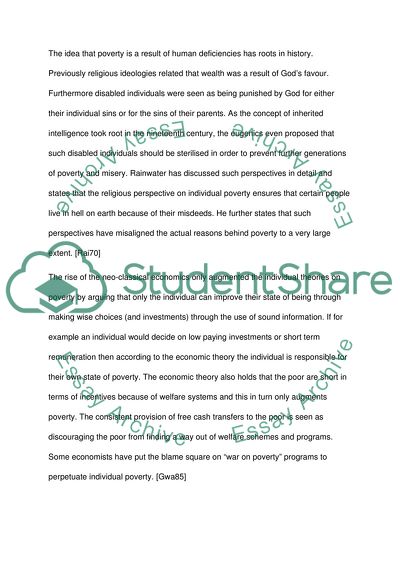Cite this document
(Poverty as a Widespread Phenomenon: Deprivation and Disparity Essay Example | Topics and Well Written Essays - 1250 words, n.d.)
Poverty as a Widespread Phenomenon: Deprivation and Disparity Essay Example | Topics and Well Written Essays - 1250 words. https://studentshare.org/psychology/1757884-poverty-the-global-and-individual-perspectiv
Poverty as a Widespread Phenomenon: Deprivation and Disparity Essay Example | Topics and Well Written Essays - 1250 words. https://studentshare.org/psychology/1757884-poverty-the-global-and-individual-perspectiv
(Poverty As a Widespread Phenomenon: Deprivation and Disparity Essay Example | Topics and Well Written Essays - 1250 Words)
Poverty As a Widespread Phenomenon: Deprivation and Disparity Essay Example | Topics and Well Written Essays - 1250 Words. https://studentshare.org/psychology/1757884-poverty-the-global-and-individual-perspectiv.
Poverty As a Widespread Phenomenon: Deprivation and Disparity Essay Example | Topics and Well Written Essays - 1250 Words. https://studentshare.org/psychology/1757884-poverty-the-global-and-individual-perspectiv.
“Poverty As a Widespread Phenomenon: Deprivation and Disparity Essay Example | Topics and Well Written Essays - 1250 Words”. https://studentshare.org/psychology/1757884-poverty-the-global-and-individual-perspectiv.


